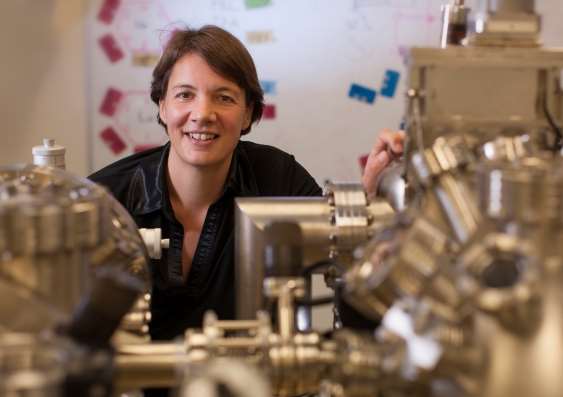Telstra and CBA have tipped $20 million into Australian efforts to build the world’s first silicon-based quantum computer, less than 24 hours after the Government committed similar funding.
As part of its innovation statement, the Government handed the Centre for Quantum Computation and Communications Technology (CQC2T) – based at UNSW in Sydney - $26 million over five years, beginning 2016-17.
“If Australian researchers are successful in developing a quantum computing capability, it would mean the development of a valuable new industry,” the Government said.
It was exactly the kind of profile that Australia’s quantum researchers had been seeking.
Australia is about “two-to-three years ahead of overseas groups in creating the first, undisputed, truly useful quantum”, the Australian Financial Review reported as Malcolm Turnbull took over the Prime Ministership back in September.
“Whether Australia maintains a lead in this area or not comes down the delicate question of money,” the paper stated, adding the answer “may depend on the attitude of our new, start-up friendly Prime Minister.”
Prescient perhaps, but this week’s Prime Ministerial profile boost for Australia’s quantum computing efforts has not gone unnoticed, spurring a fresh round of investment from the private sector.
CBA – which has previously invested $5 million over five years into CQC2T – has now committed an additional $10 million to the cause.
The bank’s CEO Ian Narev attributed the decision to further invest in quantum directly to the Government’s innovation statement and investment.
“We are pleased to provide further tangible support for the Australian Government’s National Innovation and Science Agenda,” Narev said.
“Our investment has a long-term focus and is an example of potential collaboration and commercialisation.
“It enables us to support innovation in Australia as well as aligning ourselves with innovation that we believe will materially benefit our customers and shareholders over the next decade”.
With hours, Telstra joined the ranks of quantum investors, also tipping in $10 million and “in-kind” support.
“The potential of quantum computing is significant for countries across the globe, and we are excited to be part of this important initiative to build the world’s first silicon-based quantum computer in Sydney,” Telstra CEO Andy Penn said.
“As well as a financial commitment, we will also contribute resources from our data scientist team, including the skills and knowledge of Telstra’s chief scientist, Dr Hugh Bradlow.
“The possibilities of quantum computing are very real for us, and we want to help those possibilities become a reality.”
While the industry digests the breadth of the Government’s $1.1 billion innovation strategy, the fact it had propelled science, technology, engineering and maths (STEM) to the top of the national agenda, and spurred industry to invest in local R&D efforts, suggested it had at least partially hit its mark.
Taking the lead, and keeping it
CQC2T director and Scientia Professor Michelle Simmons was excited not only by the sudden increase in funding but also “by the genuine interest that has been shown in our work by many members of parliament.”
“We thank the Prime Minister and Minister Pyne for their vision and strong interest in science and innovation,” she said.
“We are also very grateful to others particularly Senator Bridget MacKenzie who was one of the first to appreciate the importance of what we are doing.”
Simmons said that the centre’s research focus is an “ambitious and targeted program to build a 10 qubit prototype – demonstrating all the fundamental criteria of a scalable quantum computer – within five years.”
According to Wikipedia, a qubit or quantum bit is the basic unit of information in a quantum computer.
UNSW researchers have made considerable advances in quantum computing over the past few years.
In 2012, they created the first working quantum bit based on a single atom in silicon.
Two years later, two teams created two types of quantum bits that were each capable of processing quantum data with an accuracy above 99 percent – an error rate that showed the technology was approaching expectations for modern compute environments.
And just one year later, UNSW researchers built a quantum logic gate “that allows calculations to be performed between two quantum bits … thereby clearing the final hurdle to making silicon quantum computers a reality.”









